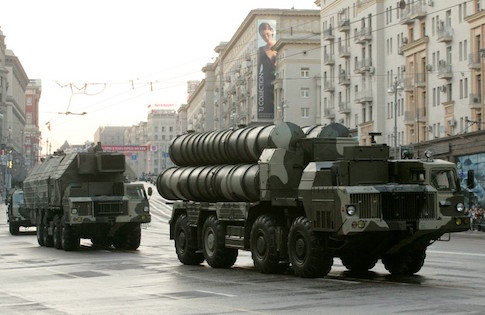Russia for the first time this week unveiled an image of a new super-heavy thermonuclear-armed intercontinental ballistic missile meant to replace its Soviet-era "Satan" missile.
The missile, known as the RS-28 Sarmat, is currently undergoing development at the Makeyev Rocket Design Bureau, which posted a declassified image of the missile on Oct. 23 to its website.
"In accordance with the Decree of the Russian Government 'On the State Defense Order for 2010 and the planning period 2012-2013,' the Makeyev Rocket Design Bureau was instructed to start design and development work on the Sarmat," read a statement from the missile's chief designers posted alongside the image.
"In June 2011, the Bureau and the Russian Ministry of Defense signed a state contract for the Sarmat's development. The prospective strategic missile system is being developed in order to assuredly and effectively fulfill objectives of nuclear deterrent by Russia's strategic forces," the statement read.
According to the Diplomat, the missile is expected to begin replacing the RS-36M intercontinental ballistic missiles, from the Soviet era, by 2020. Moscow intends to completely retire the old class of missiles, which have been nicknamed "Satan" by NATO , from its Strategic Missile Force by 2022.
The photograph has been highlighted by Russian state-run media outlets, which reported that the missile is expected to go into production as early as 2018. Russia Today reported that the missile's first stage engine PDU-99 underwent testing in August and a hypersonic warhead meant to fit on the missile was tested in April.
According to Russian media, the missiles will be able to carry as many as 10 heavy warheads or 16 lighter ones.
Russian state-controlled news outlets reported earlier this year that the missile "is capable of wiping out parts of the earth the size of Texas or France, and that its higher speed performance will enable it to speed past every missile defense system in existence."
Sputnik characterized the missile development as an "effective response" to U.S. missile defense deployments close to Russia's borders as well as the Pentagon's program to develop conventional prompt global strike weapons.
Russia has long been critical of the U.S. missile defense program. Earlier this month, Lt. Gen. Viktor Poznikhir, of the Russian military's General Staff, accused the Defense Department of developing the missile shield to allow for "the planning of a more efficient pre-emptive strike." The Russian official said that Moscow plans to cooperate with China to thwart the U.S. missile defense program.
